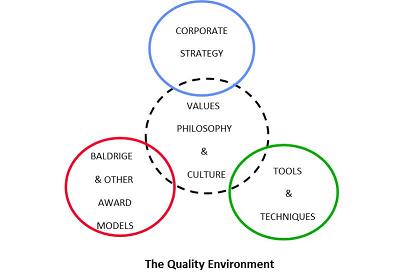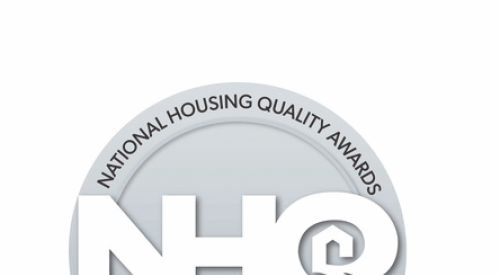There are 4 key areas that make up the Quality Management Environment.
- Core Values
- Corporate Strategy
- Quality Performance Excellence Models
- Tools & Techniques
There is a core of values and culture, surrounded by the other 3 areas. The core is where the mission and values of an organization are formed. Therefore, related issues like a focus on green building would be developed.
The next area is corporate strategy. The connection to the first area the core values means that strategy is rooted in a strong values system. The corporate strategy is what focuses on the long term perspective and the customer.
The third area is the quality models. This includes the Baldrige or NHQA or other excellence models. They provide a means for organization wide self-assessment and a mechanism for identifying Opportunities for Improvement (OFI). The models are a tool to help achieve the corporate strategy which is directed by the values at the core. This perspective also ensures that the use of quality models are not a bolt on approach but have a direct connection to the strategic drivers of the organization.
The fourth area, the tools and techniques. This represents a wide range of tactical and operational tools, such as problem solving tools including fishbones, flowcharts, control charts and even management systems. These are the boots on ground tools that are essential to achieving the strategic plan and putting into action any OFIs identified through self-assessment.
For fully mature quality management all four areas must be present. With one missing the direction of the company is not clear, how to achieve it is vague and misdirected, there is limited coordination of efforts and few or the wrong tools are used to make impacts.
Are you using the complete Quality Environment?












